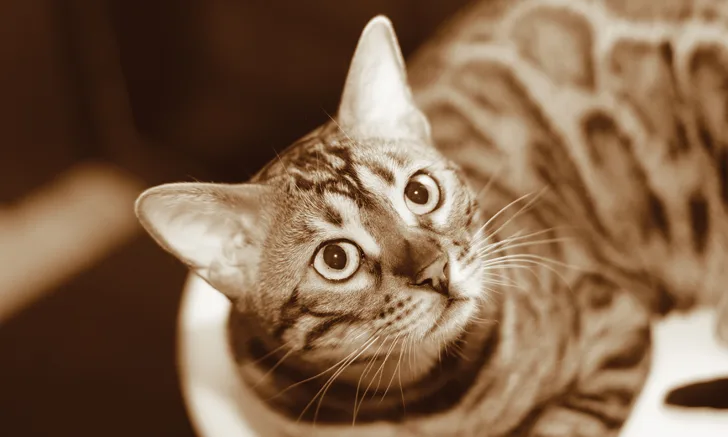Ketamine
Khursheed Mama, DVM, DACVAA, Colorado State University

Ketamine is a commercially available cyclohexanone with a long-standing role in global veterinary anesthesia.
Overview
The commercially available formulation, ketamine hydrochloride, is acidic and can cause pain on intramuscular injection (author experience). However, the drug itself—which is a racemic mixture of 2 optical isomers—is a weak base, with a pK, of 7.5.
No receptor-specific reversal agent exists for ketamine.
Pharmacokinetics & Clinical Use
Ketamine is typically administered intravenously, but intramuscular administration may be used in some instances (eg, feline feral neuter programs, primate or wildlife management).
Drug uptake following intramuscular administration is approximately 93%.1
Although oral administration may occasionally be recommended (eg, to treat fractious animals), extensive first-pass metabolism can result in low bioavailability (≈16%) in systemic circulation, making this route somewhat impractical.1
Ketamine continues to be extensively used in the anesthetic management of horses, nonhuman primates, and other nondomesticated species, but its popularity as an anesthetic induction agent in dogs and cats continues to decline in the United States.
This decline is likely due to the availability of other drugs as well as ketamine-induced behavioral adverse effects (eg, excitement on emergence from anesthesia, myoclonus, increased motor activity).
To help counter these behavioral effects and muscle hypertonicity, ketamine is most commonly used with other drugs (eg, benzodiazepines, α2-adrenergic agonists).
Its use with propofol has been evaluated in dogs; results have shown improved heart rate and blood pressure but increased respiratory depression as compared with use of propofol alone.2
Induction and intubation conditions were also consistently good with this drug combination.
This combination has also been used with favorable results to provide total intravenous anesthesia for cats undergoing ovariectomy.3
Cardiovascular Effects
Primary cardiovascular effects of ketamine administration include an increase in sympathetic tone and potential depression of baroreceptor feedback in healthy humans and animals.
This most commonly causes an increase in heart rate and blood pressure, despite mild vasodilation.4,5
Myocardial work and oxygen consumption are also increased with ketamine administration.
Although well tolerated in normal patients, ketamine is not recommended in animals with restrictive or hypertrophic cardiac diseases and other conditions for which an increase in sympathetic tone is undesirable (eg, hyperthyroidism, pheochromocytoma).6-8
Although myocardial contractility may increase, decrease, or remain unchanged in animals, depression of myocardial function has been seen in isolated heart preparations.7,9
Blood pressure has also been shown to decrease following ketamine administration in hypovolemic animals.10,11
Respiratory Effects
Mild, transient decreases in ventilation and oxygenation have been reported following ketamine administration.12,13
However, an increase in respiratory rate may also be observed if excitement is an effect of anesthetic induction.12,13
An apneustic breathing pattern is common following ketamine administration.
Ketamine serves as a bronchodilator and may be of value in animals with chronic obstructive pulmonary disease or asthma.14
Pharyngeal and laryngeal reflexes often remain, but intubation conditions are good once the mouth is open.
An antisialagogue may be beneficial to counteract increased salivation seen with ketamine administration.
Analgesia
Although ketamine is less commonly used as a sole anesthetic induction agent in dogs and cats, its use in the prevention of wind up or spinal facilitation of pain is increasing.
Veterinary studies are limited but, along with clinical impressions, suggest that NMDA (N-methyl-D-aspartate) antagonist actions are beneficial in painful animals. A study has shown that, when a ketamine infusion was administered as part of a balanced analgesia plan in the intraoperative period to dogs undergoing forelimb amputation, the need for additional postoperative analgesics was reduced.15
Additional Adverse Effects
Seizure-like effects have been reported, although ketamine has been used to treat seizures.14
These effects are noted less in the positive (or S) isomer, which may be available in some countries.16,17
Although racemic ketamine is generally efficiently cleared by the liver and excreted with its metabolites by the kidneys, factors affecting metabolism or excretion can prolong clearance.
Emergence reactions (eg, presumed hallucinogenic or excitatory behaviors exhibited upon emergence from anesthesia) may therefore result.
Because both ketamine and the active first metabolite norketamine are excreted by the kidneys, these negative behavioral effects may be further exacerbated in cats with renal disease.18,19